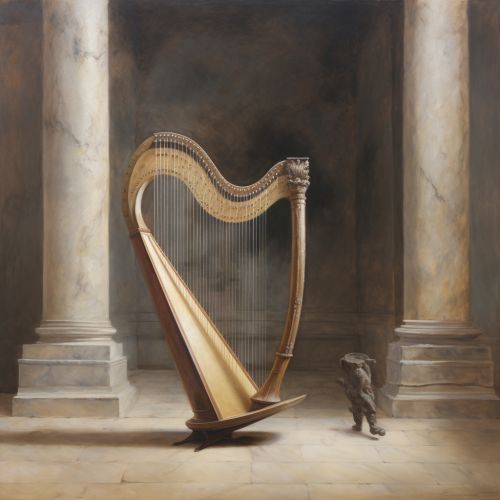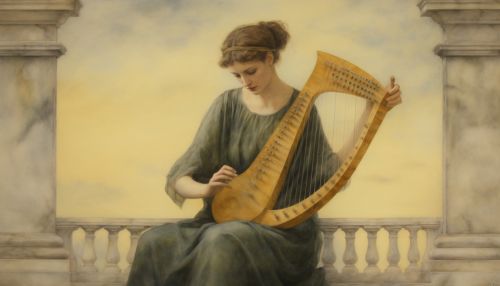Lyre
History
The lyre is a stringed musical instrument known for its use in Greek classical antiquity and later periods. The lyre is similar in appearance to a small harp but with distinct differences. The word comes from the Greek "λύρα" (lyra) and the earliest reference to the word is the Mycenaean Greek ru-ra-ta-e, meaning "lyrists", written in Linear B syllabic script. The lyre was a common musical instrument in the ancient world, particularly in Greece, where it was a central element in the musical education of the time.


Construction and Design
The lyre typically has a sound-box, often made of wood, and two arms connected by a yoke. From this yoke, strings of equal length extend down to the sound-box. The strings, which were traditionally made of gut, are of different thicknesses, with the thicker strings producing lower notes. The strings are tuned by adjusting the pegs at the top of the arm. The player of the lyre, known as a lyrist, would strum the strings with a plectrum, which was often made of bone or ivory.
Types of Lyres
There are several types of lyres that have been used throughout history. These include the kithara, the chelys, the phorminx, and the barbiton. The kithara was a professional version of the lyre. The chelys, named after the tortoise shell upon which it was traditionally constructed, was used mostly in choral performances. The phorminx, with its large and deep sound-box, was used primarily in processions and sacred ceremonies. The barbiton, with its longer strings, produced deeper tones and was often used in accompaniment of recitations.
Cultural Significance
The lyre was not just a musical instrument in the ancient world. It was a symbol of wisdom and education. The Greek god Apollo is often depicted with a lyre, symbolizing his patronage of the arts. The lyre also appears in many myths and stories of ancient Greece, such as the myth of Orpheus, who charmed all living things with his music.
Modern Use
Today, the lyre is not as commonly used as other stringed instruments like the guitar or violin. However, it still has a place in certain musical traditions. In Africa, variations of the lyre are used in traditional music. The krar of Ethiopia and the kissar of Sudan are examples of African lyres. In Europe, the lyre has seen a resurgence in the folk music scene, and there are now modern versions of the lyre available for purchase.
